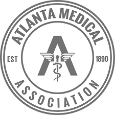Functional vs Cosmetic Rhinoplasty
Rhinoplasty can be one of the most demanding and yet rewarding surgeries for many of us who perform facial plastic surgery procedures. The anatomy of the nose can be unforgiving, so meticulous attention to detail and a comprehensive understanding of the function aspects of nasal breathing are essential to successful surgery.
Patients can present for consultation with a myriad of concerns: prior trauma, difficulty breathing through one side or the other, prior unsuccessful or partially successful surgery, or no difficulties with breathing but a desire for the nose to appear more cohesive with their facial features. Because of this, we tend to break rhinoplasty into functional issues and cosmetic issues. That is a distinction that helps with planning, priorities of the patient, and in some cases, insurance coverage. But for many patients, functional and cosmetic concerns go hand in hand. For example, a pinched nasal tip or asymmetric bridge can compromise breathing. Correction of those initial concerns can be improved simply be treating the underlying cause. In other cases, cosmetic concerns may limit the extent to which a functional procedure can be successful. Some patients do not want the risk of any possible fullness added to any aspect of their nose. In patients with thin skin, narrow noses and narrowed air passages, increasing the width by 1-2 mm can significantly improve the function of the nose. These conversations, desires and goals must be discussed thoroughly with your surgeon prior to embarking on a rhinoplasty surgery.
There are certainly a large proportion of rhinoplasty patients who have no breathing complaints, but simply have a desire for their nose to fit better with their facial features. Again, an honest conversation must be had between surgeon and patient to establish precise goals. Narrowing the bridge, narrowing the nostrils, adjusting or refining the tip cartilages excessively can have significant short and long-term consequences to function. Gone are the days when cartilage was completely removed, drastically repositioned or sutured to fit some highly stylized nasal ideal. Over the years we have seen what these types of surgeries result in functionally. Correction of those “overdone” rhinoplasties is not only quite difficult but rarely as good as the patient would have desired.
Your surgeon will discuss what your desires are, examine the outside and inside of your nose, possibly perform minor maneuvers to determine if there are functional issues at the same time, and make recommendations based on their experiences. They may have you undergo computer imaging to facilitate a discussion of your desires and what they think is a realistic result. These discussions are critical to your understanding of what your surgeon views as aesthetically ideal and feasible. It is crucial to ensure you understand what the limitations may be to achieve your aesthetic goals, if any.
The majority of rhinoplasty patients are very satisfied with their results and are happy with the decision to have undergone surgery. Although the first week of recovery can be challenging, the benefits do outweigh the risks and you will enjoy a new functional and newly refined nose for many years to come!




